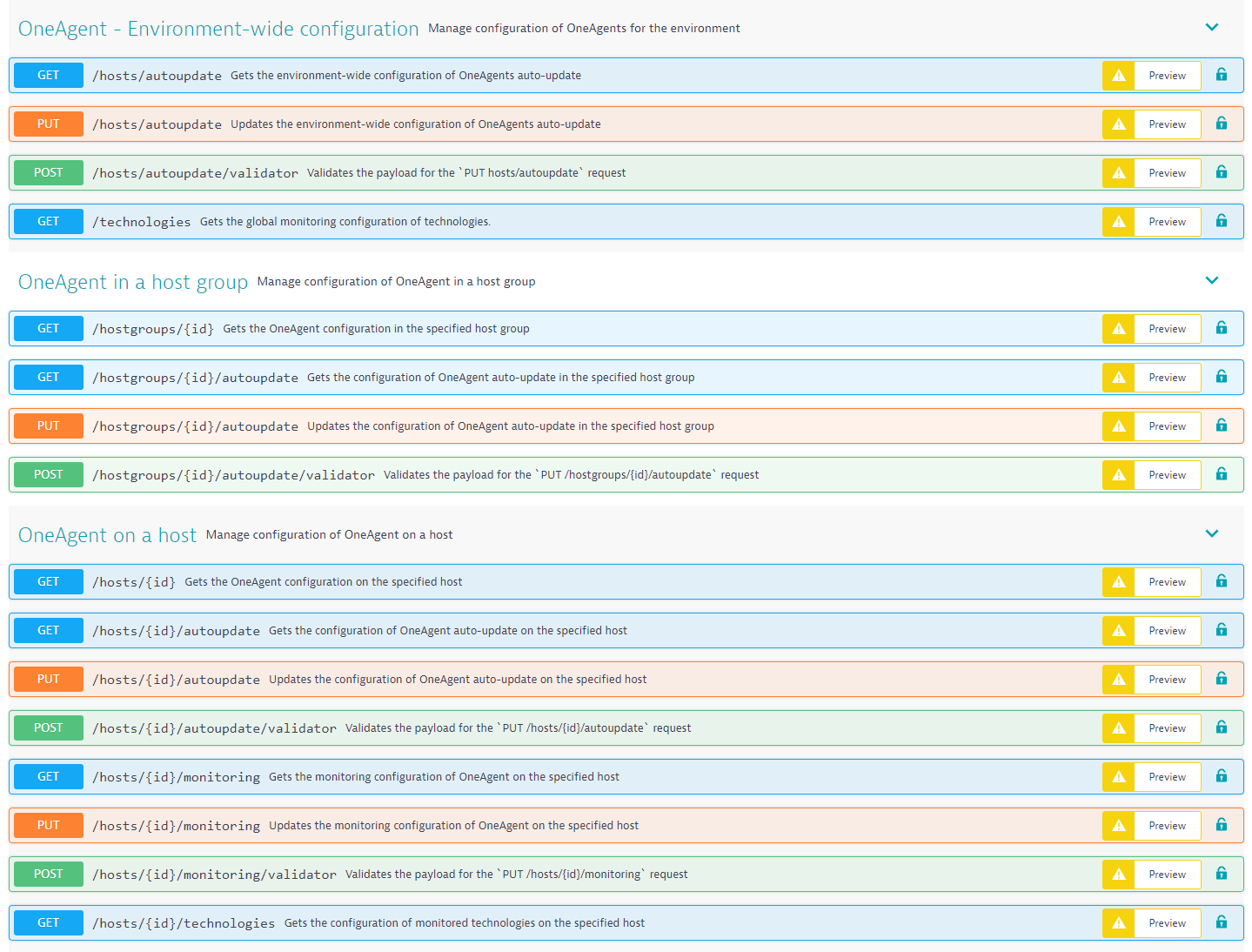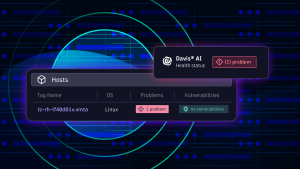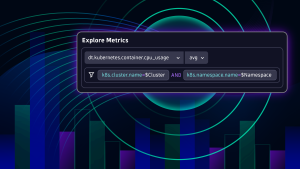“We have over 7000 hosts in our environment. The OneAgent on a host REST API is critical for us to easily automate the switch between full stack and infrastructure monitoring mode.”
– a Dynatrace customer
The Dynatrace Software Intelligence Platform is built for scale. Our largest customers are global companies that have absolutely massive application stacks that are spread across cloud and enterprise platforms, multiple physical geographies, tens of thousands of virtual and physical hosts, and hundreds of thousands of containers.
It is a common misconception that the management of monitoring modules ends with their deployment. Although we made sure OneAgents requires as little configuration as possible with smart defaults and adaptive thresholds, there is still need of additional management and potential reconfiguration related to the dynamism of the monitored environment. A few examples:
Defined maintenance windows
- OneAgents’ auto update mechanism is a huge convenience. But in larger environments with well-defined maintenance windows and strict staging-to-production testing policy for any software it may be impossible to use auto update directly. Consequently, in such cases, the production environment’s update needs to be scheduled and executed at a later date, which is determined by the conclusion of staging environment tests.
Staging environments
- Large organizations typically use multiple staging environments in order to recycle the infrastructure in a convenient fashion. Let’s consider an example where a new version of the business software is rolled out to a set of rotating staging environments, and for example staging A becomes active and staging B needs to be recycled and prepared for another round. In case it is important that Dynatrace monitors the currently active staging A, while staging B can be temporarily disabled to save on license cost and data storage capacity of Dynatrace cluster. Staging environments often represent a direct replica of production environments and may consists of hundreds of hosts.
Changing function of a host
- Business software evolves over time, and so do the requirements for monitoring. A host which serves a supporting infrastructure function today can become a home for critical technology with actual user transactions tomorrow. As a consequence, the monitoring mode of OneAgents on such hosts may need to be switched in bulk from “Infrastructure Monitoring” to “Full-Stack”.
- and so on…
The above examples may be coming directly from Dynatrace environment but have their corresponding equivalents in any competing agent based monitoring solution. The tricky question is: How to make sure such operations require as little effort as possible, can be done centrally for thousands of deployed agents and retain backwards compatibility and supportability between versions?
Dynatrace OneAgent lifecycle management allows customers to easily manage their OneAgent instances at scale and cover use cases like:
- Keeping track of OneAgent update progress via API queries.
- Turning monitoring on/off based on server status in a CMDB.
- Automatically enabling/disabling monitoring of specific hosts.
In February, we introduced a Preview release of the OneAgent on a host REST API that enables you to easily manage thousands of OneAgent instances remotely. To take this value to the next level, with Dynatrace version 1.202, centralized lifecycle management for OneAgent is Generally Available for all Dynatrace customers and fully supported for production environments.
Centralized, large-scale management of OneAgent lifecycle
Thanks to the ease of deploying OneAgent, the time-to-value for monitoring complex enterprise environments is short. However, OneAgent lifecycle doesn’t end with deployment. As with any other software, OneAgent instances need to be maintained, updated, and monitored.
Compared to other solutions on the market, Dynatrace blends the ease of use with adherence to industry standards and large-scale environment expectations. The zero-config policy which is the guiding beacon for our architectural designs and decisions, together with completely automatic OneAgent update mechanism make it possible to lower the internal cost of ownership to minimum. And in those cases where management of large-scale environments is required due to internal policies and environment dynamism, it is possible to manage such environments efficiently and effectively.
The unique advantage of Dynatrace: our deployments provide centralized configuration that can be managed from a single place. You don’t need to build Ansible, Chef, Puppet, or SaltStack scripts to control or update your OneAgent instances. All this can be done centrally from the Dynatrace Cluster, regardless of whether you’re monitoring physical hosts, AWS EC2 server instances, services running in Kubernetes Pods, virtual machines under VMware, or any supported operating system or technology that can be monitored using Dynatrace.
Central configuration comes with two important benefits:
- Ease of integration: Just connect to your Dynatrace Cluster API—we’ll take care of the REST (pun intended).
- Speed of management: With a single command, you can manage hundreds or thousands of Dynatrace OneAgent instances almost instantaneously, wherever they are and whatever they’re configured to do.
Enhancements in centralized OneAgent lifecycle management
The complete OneAgent lifecycle management solution (GA release) includes, but is not limited to, the following features:
- Ability to read and search for OneAgent versions (including the use of the
>,<,>=, and<=search conditions) - Ability to read and search for versions of all active OneAgent components, also including the injected deep-monitoring module
- Ability to read and search for OneAgent modules that require the monitored process to be restarted in order to be bumped up to the latest deployed version of OneAgent
- Ability to read and search for enabled/disabled OneAgent instances and check their monitoring status
- Ability to read and search for OneAgent instances operating in full-stack or infrastructure monitoring modes
- Full control of update mechanics:
- Control of auto update-settings at the tenant, host-group, and host level
- Manual updates to a pre-selected version
- Full control of the OneAgent monitoring mode (Full-stack mode, Infrastructure mode, or disabled)
Where to find the new REST API methods
All the new and updated REST API methods are available in the Dynatrace API Explorer, which you can access from your Dynatrace environment. The API Explorer allows you to interactively explore and use the Dynatrace REST API right from your web browser.
From the User menu at the top-right of the Dynatrace menu bar, select Environment API v1. Scroll down and expand the OneAgent on a host endpoint.
Additional methods are also available in the Configuration API—select the User menu > Configuration API to open the API Explorer. Expand the OneAgent on a host endpoints to view and try out the available methods.
Alternatively, you can read about all the REST API methods in Dynatrace Help:
Conclusion of the Preview and next steps
Over the last several months, we welcomed feedback from over 90 participants of the Preview—large, medium, and smaller companies with both SaaS and Managed deployments of Dynatrace. The feedback collected was instrumental in making the decision to release this feature to a general audience. And it’s also allowed us to develop our roadmaps with plans for valuable improvements. During the next several months, we’ll be investing our efforts into the implementation of several highly requested enhancements. We’ll release these improvements iteratively, and each milestone will be accompanied by a dedicated blog post like this one.
On behalf of the entire team involved in this release, we thank all participants, and especially those of you who were kind enough to share your comments and feedback with us. You are awesome!
Feedback?
As always, we welcome your feedback and comments. Please share your thoughts via Dynatrace Community, directly within the product through Dynatrace ONE chat, or with your Dynatrace Account Manager.







Looking for answers?
Start a new discussion or ask for help in our Q&A forum.
Go to forum